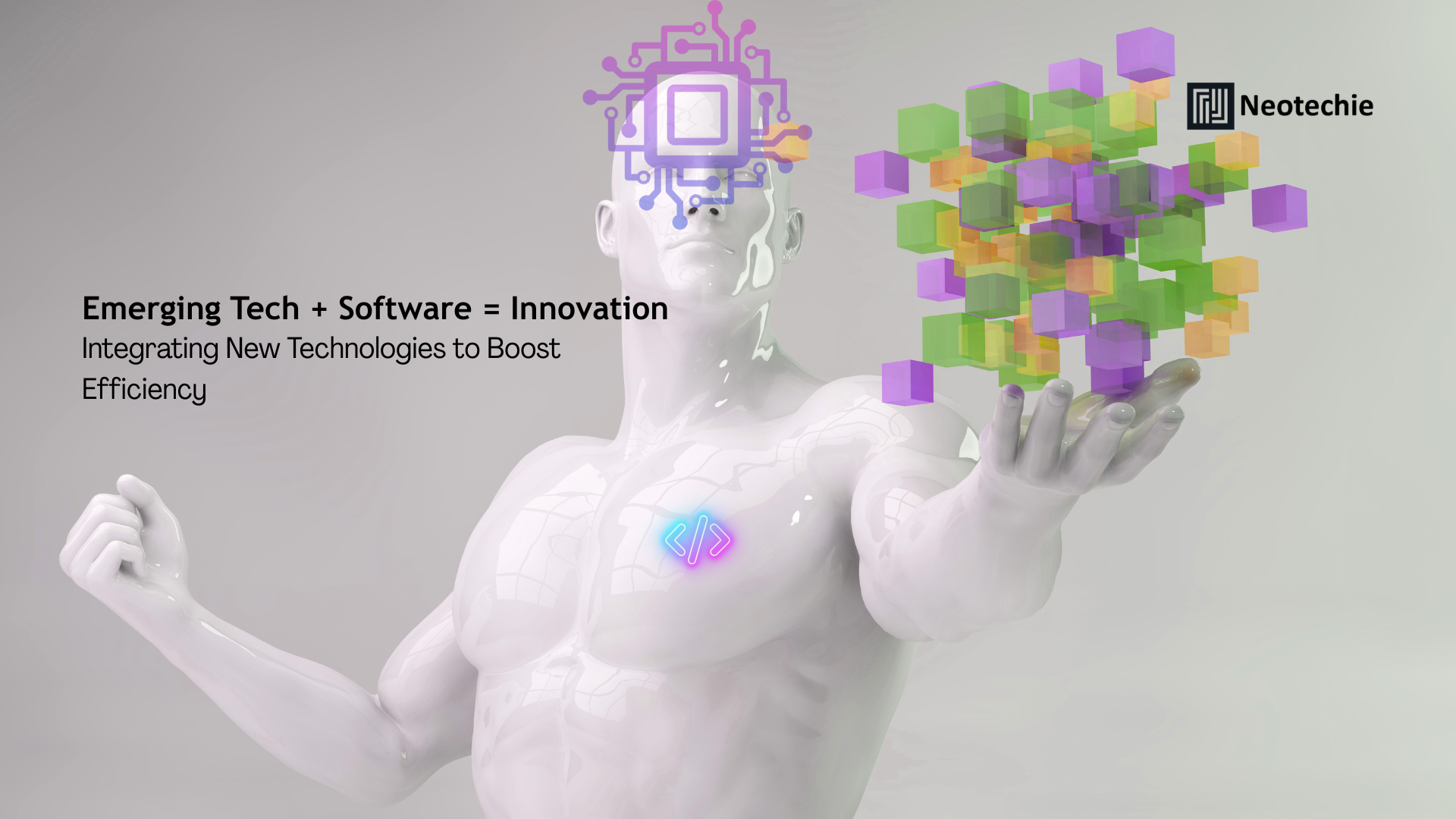Integrating Emerging Technologies into Software Solutions: Driving Innovation and Efficiency
Businesses navigating today’s competitive landscape need more than basic software solutions. Leveraging emerging technologies such as Artificial Intelligence (AI), Machine Learning (ML), Internet of Things (IoT), and blockchain can transform operations, enhance decision-making, and create tangible business value. Strategically integrating these technologies ensures innovation, efficiency, and sustainable growth.
What Are Emerging Technologies in Software?
Emerging technologies are advanced tools that enhance software capabilities beyond traditional systems. They provide intelligence, connectivity, and adaptability, helping businesses respond rapidly to market demands. Key technologies include:
- Artificial Intelligence (AI) and Machine Learning (ML): Automate complex processes, analyze vast datasets, identify patterns, predict trends, and generate actionable insights. ML algorithms continuously learn, enabling predictive maintenance, customer behavior analysis, and optimized resource allocation.
- Internet of Things (IoT): Connects devices and sensors to collect real-time data, enhancing operational visibility. For example, IoT sensors can track fleet performance in logistics or machinery health in manufacturing.
- Blockchain: Provides secure, transparent, and tamper-proof data management, enabling traceability, fraud protection, and simplified regulatory compliance.
- Augmented Reality (AR) and Virtual Reality (VR): Enhance user experience, training, and visualization. AR overlays real-world data for operational guidance, while VR offers immersive simulations for training or product demos.
- Cloud and Edge Computing: Provide scalable computing power and low-latency data processing. Cloud solutions scale resources on demand, while edge computing processes data close to the source.
Why Integrating Emerging Technologies Matters
- Operational Efficiency
Automates repetitive tasks, reduces errors, and streamlines workflows, freeing employees to focus on strategic work. - Data-Driven Decision Making
AI and ML analyze complex datasets to uncover insights, forecast trends, and optimize inventory and operations. - Enhanced Customer Experience
Technologies such as AR/VR and AI personalization engines provide interactive, customized experiences, improving satisfaction and loyalty. - Innovation Enablement
Facilitates creation of unique products, services, and business models that differentiate organizations from competitors. - Security and Trust
Blockchain and advanced encryption safeguard data, reduce fraud, and ensure compliance, building trust with customers and stakeholders.
How to Integrate Emerging Technologies into Software
- Identify Business Needs and Objectives
Assess areas where technologies can deliver maximum value—automation, analytics, engagement, or strategy. - Start Small with Pilot Projects
Deploy on a limited scale to test performance, ROI, and feasibility before full-scale integration. - Ensure Scalability
Use modular and microservices architectures to accommodate future growth in users, data, and features. - Prioritize Data Management
Implement structured frameworks for data collection, storage, and processing to support AI, IoT, and blockchain effectively. - Continuous Monitoring and Improvement
Maintain adaptability with ongoing performance monitoring, updates, and iterative enhancements.
Business Transformation Through Emerging Technologies
- Increased Agility: Real-time insights enable rapid operational adjustments.
- Enhanced Productivity: Automation reduces manual effort, freeing employees for strategic initiatives.
- Competitive Differentiation: Early adoption of emerging technologies offers unique products and services.
- Improved Risk Management: Predictive analytics and blockchain transparency mitigate operational, financial, and cybersecurity risks.
- Sustainable Innovation: Continuous integration ensures long-term adaptability and growth.
Practical Use Cases
- AI & ML: Predictive maintenance, fraud detection, and intelligent customer support.
- IoT: Smart fleet management, connected machinery, and environmental monitoring.
- Blockchain: Supply chain traceability, digital contracts, and secure transactions.
- AR/VR: Interactive product demos, immersive training, and design simulations.
- Cloud & Edge Computing: Scalable data processing, low-latency analytics, and flexible deployment.
What, Why, and How of Emerging Technology Integration
- What: Embedding AI, ML, IoT, blockchain, AR/VR, and cloud technologies into software for expanded capabilities.
- Why: To improve efficiency, decision-making, innovation, security, and customer experiences.
- How: Through strategic planning, pilot projects, scalable architectures, robust data management, and continuous monitoring.
How Neotechie Helps Integrate Emerging Technologies
Neotechie empowers businesses to leverage emerging technologies effectively:
- AI & ML Solutions: Automate processes, uncover insights, optimize performance.
- IoT Integration: Real-time device connectivity for operational intelligence.
- Blockchain Implementation: Secure, transparent, and verifiable transactions.
- Cloud-Native and Edge Solutions: Scalable, high-performance infrastructure.
- Continuous Innovation Support: Maintain and enhance systems with evolving technologies.
Partnering with Neotechie ensures strategic, secure, and scalable implementation of emerging technologies, driving efficiency, innovation, and competitive advantage.
Final Thought
Integrating emerging technologies into software transforms operations, decision-making, and customer experiences. AI, ML, IoT, blockchain, AR/VR, and cloud computing provide the tools for innovation, scalability, and competitiveness. With Neotechie’s guidance, organizations can implement these technologies effectively, ensuring secure, scalable, and impactful software solutions that drive sustainable growth.

